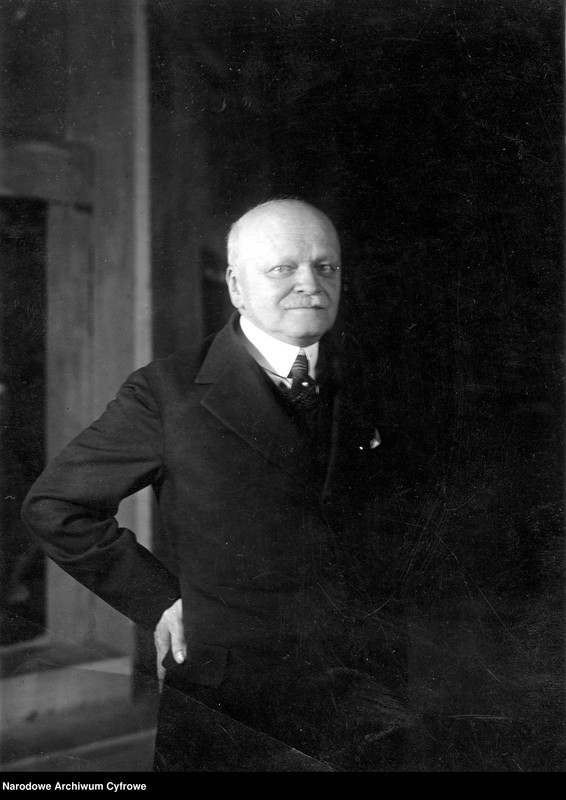For you Sir.
If you wouldn't mind, could you share a link to the file so that others may review?
The Polish State Archives have a bunch of photos of Krzywoszewski and some documents. Also one photo including Jozef Galewski in 1929.Denierbud wrote: ↑Tue Oct 07, 2025 3:51 am Thanks Stubble! I like German lagers. I'll have to buy you a beer for all your great posts here!
Julian the scheissmeister. And another character named Moritz. Who could they be references to? Obviously people Kryzwoszewski didn't like. If he's the writer. He wrote a memoir, as an old man in 1947. Or maybe he wrote it earlier because I have the pdf and one of the last chapters is Rok 1922. Rok means year. Here's what what he looked like:




I must have set those images to auto-remove.pilgrimofdark wrote: ↑Tue Oct 07, 2025 1:30 pm
The Polish State Archives have a bunch of photos of Krzywoszewski and some documents. Also one photo including Jozef Galewski in 1929.
Galewski is third from the left. Almost looks like he has one bad eye? He also appears for about 1 second in a Polish film decades later, but it's almost impossible to get a good look at him. Galewski wrote his memoirs, but they're unpublished.
Polish State Archives


I can't tell exactly when it started being reprinted around the world.From a personal testimony from Treblinka, it is learned that Jews with foreign [i.e. neutral] nationalities who were presumably being diverted to the Bergen camp near Hannover and had been quartered in Warsaw hotels, were sent to Treblinka.
Attached: a letter from Skarzysko and the essay, “A year in Treblinka."
- GFH translation
Thank you, thank you.
Wiernik was a steward? I thought he was a master carpenter, or a master cabinetmaker. (When he wasn't being a communist propagandist.)Standing in the open door was our steward from Wołyńska Street, Wiernik.
...
He also found a kindred spirit who wrote down his experiences in Treblinka. The manuscript was sent to London, where it was translated into English. Published in the United States, it reportedly sold a large number of copies.
Stubble I think you hit the nail on the head here, well done. They are still doing it. I copied and saved the maps of Sobibor. When the photos of Sobibor were published, those of Johann Niemann, I noted the images did not align with the camp layout in the maps. This was mentioned in RODOH. Anyhow the maps now align with the real images, they have been altered and pretending to be old copies. Shame my old hard drives failed as I would love to have presented this information here with fact. What they are presenting is fake information and Nessie is involved.Stubble wrote: ↑Sat Oct 11, 2025 3:02 am So, we have Wernick listed in the phone book as a 'master carpenter', but, his backstory is supposed to have him being a 'handyman' (steward) for Krzywoszewski.
There any proof, other than a wink and a nod, for how he supposedly knew the guy and ended up on his porch?
Did anything develop looking for a copy of his first fake ID? (I didn't find anything, but, you guys have me beat by miles winnowing this stuff)
It seems pretty 'convenient' that he ended up there, and that Krzywoszewski just happened to be a writer.
So far as you missing anything Pilgrimofdark, that wasn't what I was saying man. I just didn't want you to overlook what Wetzelrad pointed at with the verbiage is all. Again, you are a BEAST Sir, and I must say again KUDOS.
So far as where this all sits, let me see if I can shake it all out here real quick.
Wernick is active in subversive jewish activity. He gets busted and sent to Siberia, then has to do a stint in the army. After that, he moves to Poland and sets up a shop doing woodwork. He gets popped making communist proclamations in 'the bread of life' building. Things go quiet. After the partition, things go real quiet and he isn't listed in the phonebook or much of anywhere else. It is said he is living in the ghetto at this time, and it is said that he gets shipped to Treblinka. He, facilitates the revolt, and escapes. He goes straight to Krzywoszewski's and gets a fake ID and 'A Year in Treblinka' is penned. Then it gets gone over by a committee in the ghetto before being printed in Polish, and it goes through another diet in London and is printed in English.
Now, I'm skipping over the earlier submissions to the underground newspapers, because I'm not sure how those came to pass. My current thinking is that during the diet in Warsaw, before hitting print, it was 'fed' to these underground outlets. Does that pass muster?
Am I missing some stuff here, or, am I following along close enough?
Ahh, that was just a joke. Wetzelrad did correct an error I made on the Mogilev gassing thread, and he always comes in with excellent new sources. I didn't think you were criticizing me or anything.
I think all of the above can be shown through the documents uncovered so far. Everything else is somewhat in question, for me at least.Stubble wrote: ↑Sat Oct 11, 2025 3:02 amWernick is active in subversive jewish activity. He gets busted and sent to Siberia, then has to do a stint in the army. After that, he moves to Poland and sets up a shop doing woodwork. He gets popped making communist proclamations in 'the bread of life' building. Things go quiet. After the partition, things go real quiet and he isn't listed in the phonebook or much of anywhere else.